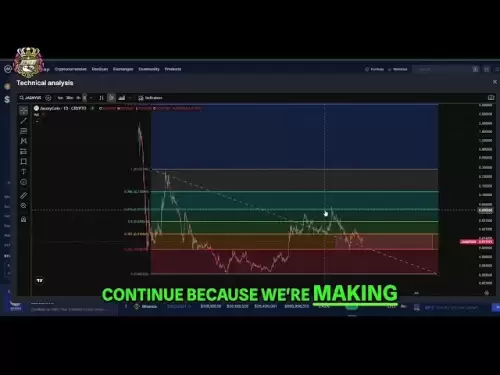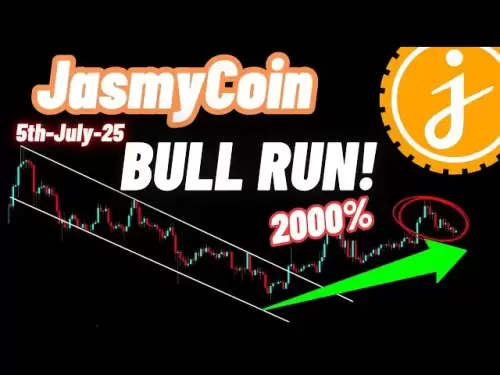-
 Bitcoin
Bitcoin $108,250.0992
0.11% -
 Ethereum
Ethereum $2,515.9404
0.03% -
 Tether USDt
Tether USDt $1.0003
0.00% -
 XRP
XRP $2.2166
-0.19% -
 BNB
BNB $656.5904
0.29% -
 Solana
Solana $147.4122
-0.58% -
 USDC
USDC $1.0000
-0.01% -
 TRON
TRON $0.2830
0.06% -
 Dogecoin
Dogecoin $0.1641
0.27% -
 Cardano
Cardano $0.5739
-0.19% -
 Hyperliquid
Hyperliquid $39.1463
-0.11% -
 Sui
Sui $2.8882
-0.02% -
 Bitcoin Cash
Bitcoin Cash $487.6428
0.31% -
 Chainlink
Chainlink $13.2097
0.07% -
 UNUS SED LEO
UNUS SED LEO $9.0308
0.10% -
 Avalanche
Avalanche $17.8608
0.13% -
 Stellar
Stellar $0.2379
-0.06% -
 Toncoin
Toncoin $2.7400
-0.39% -
 Shiba Inu
Shiba Inu $0.0...01144
-0.36% -
 Litecoin
Litecoin $87.5467
0.66% -
 Hedera
Hedera $0.1538
0.22% -
 Monero
Monero $315.5479
0.36% -
 Dai
Dai $1.0000
0.00% -
 Polkadot
Polkadot $3.3523
-0.71% -
 Ethena USDe
Ethena USDe $1.0003
0.01% -
 Bitget Token
Bitget Token $4.3960
-1.03% -
 Uniswap
Uniswap $7.2663
4.19% -
 Aave
Aave $272.8619
2.04% -
 Pepe
Pepe $0.0...09676
-0.18% -
 Pi
Pi $0.4586
-2.87%
What is the consensus delay of blockchain? How to optimize it?
Consensus delay, the time for blockchain networks to agree on transactions, varies by mechanism; PoW is slower than PoS, impacting efficiency and security.
Apr 27, 2025 at 07:36 pm
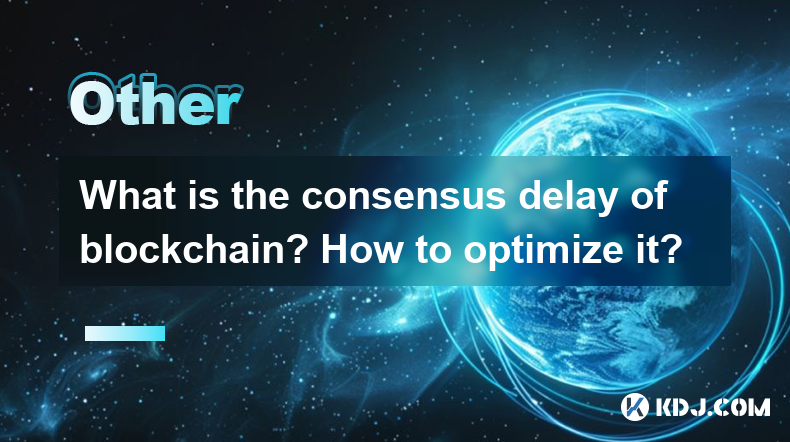
The concept of consensus delay in blockchain is crucial for understanding the efficiency and security of decentralized networks. Consensus delay refers to the time taken for a blockchain network to reach an agreement on the validity of transactions and the order in which they should be added to the blockchain. This delay is inherent in the consensus mechanisms that different blockchains use to ensure all participants agree on the state of the ledger.
Understanding Consensus Mechanisms
Different blockchains employ various consensus mechanisms, each with its own approach to achieving agreement among network participants. Proof of Work (PoW), used by Bitcoin, involves miners solving complex mathematical problems to validate transactions and add them to the blockchain. The delay in PoW comes from the time required to solve these problems, which can be significant. Proof of Stake (PoS), on the other hand, selects validators based on the number of coins they hold and are willing to "stake" as collateral. PoS generally results in faster consensus times compared to PoW because it does not require energy-intensive mining.
Factors Contributing to Consensus Delay
Several factors contribute to consensus delay in blockchain networks. Network latency is a primary factor, as the time it takes for data to travel across the network affects how quickly consensus can be reached. Block size and block time also play significant roles; larger blocks take longer to process, and longer block times mean more time between blocks being added to the chain. Additionally, the number of nodes in the network can impact consensus delay, as more nodes mean more data to synchronize.
Measuring Consensus Delay
To optimize consensus delay, it is first necessary to measure it accurately. Consensus delay can be measured by the time between when a transaction is broadcast to the network and when it is confirmed and added to the blockchain. Tools like blockchain explorers and network monitoring software can provide insights into this metric. By analyzing the data collected, network operators can identify bottlenecks and areas for improvement.
Strategies to Optimize Consensus Delay
Optimizing consensus delay involves addressing the factors that contribute to it. Here are several strategies to achieve this:
Reduce Block Time: Shortening the time between blocks can speed up the consensus process. For example, Ethereum's transition from PoW to PoS aims to reduce block times significantly.
Increase Block Size: Larger blocks can accommodate more transactions, potentially reducing the number of blocks needed to process a given volume of transactions. However, this must be balanced against the increased processing time for larger blocks.
Improve Network Infrastructure: Enhancing the underlying network infrastructure can reduce latency. This might involve upgrading hardware, optimizing network topology, or using more efficient communication protocols.
Implement Sharding: Sharding divides the blockchain into smaller, more manageable pieces, allowing parallel processing of transactions. This can significantly reduce consensus delay by distributing the workload across multiple nodes.
Use Off-Chain Solutions: Off-chain solutions like the Lightning Network for Bitcoin can process transactions outside the main blockchain, reducing the load on the network and thereby decreasing consensus delay.
Implementing Consensus Delay Optimization
To implement these optimization strategies, network operators and developers must follow specific steps. Here is a detailed guide on how to reduce block time as an example:
Assess Current Block Time: Use blockchain explorers and network monitoring tools to determine the current average block time.
Analyze Network Performance: Evaluate the network's current performance, including latency and throughput, to identify potential bottlenecks.
Adjust Consensus Parameters: Modify the consensus algorithm parameters to reduce block time. For PoW, this might involve adjusting the difficulty level; for PoS, it could mean changing the validator selection process.
Test Changes in a Testnet: Before implementing changes on the mainnet, test them in a testnet environment to ensure they do not introduce new issues.
Monitor and Iterate: After implementing changes, continuously monitor the network's performance and make further adjustments as needed.
Case Studies of Consensus Delay Optimization
Several blockchain networks have successfully optimized their consensus delay. Ethereum's transition to Ethereum 2.0 is a notable example. By moving from PoW to PoS and implementing sharding, Ethereum aims to significantly reduce consensus delay. Similarly, Bitcoin Cash increased its block size to accommodate more transactions per block, aiming to reduce the time needed to process transactions.
The Role of Consensus Delay in Blockchain Security
While optimizing consensus delay is important for improving network efficiency, it must be balanced against security considerations. A shorter consensus delay can potentially make the network more vulnerable to attacks, such as 51% attacks in PoW systems or stake grinding in PoS systems. Therefore, any optimization efforts must consider the trade-offs between speed and security.
Frequently Asked Questions
Q: How does consensus delay affect transaction fees?
A: Consensus delay can impact transaction fees because longer delays may lead to higher fees as users compete to have their transactions processed more quickly. Networks with shorter consensus delays can often offer lower fees due to increased efficiency.
Q: Can consensus delay be completely eliminated?
A: No, consensus delay cannot be completely eliminated as it is an inherent part of the consensus process in decentralized networks. However, it can be minimized through various optimization strategies.
Q: How does consensus delay differ between public and private blockchains?
A: Public blockchains typically have longer consensus delays due to the larger number of nodes and the need for more robust security measures. Private blockchains, with fewer nodes and more control over the network, can achieve shorter consensus delays.
Q: What role does consensus delay play in blockchain scalability?
A: Consensus delay is a critical factor in blockchain scalability. Networks with shorter consensus delays can process more transactions per second, improving overall scalability. Optimizing consensus delay is therefore essential for scaling blockchain networks to handle higher transaction volumes.
Disclaimer:info@kdj.com
The information provided is not trading advice. kdj.com does not assume any responsibility for any investments made based on the information provided in this article. Cryptocurrencies are highly volatile and it is highly recommended that you invest with caution after thorough research!
If you believe that the content used on this website infringes your copyright, please contact us immediately (info@kdj.com) and we will delete it promptly.
- BNB, Nano Labs, and Binance: A $160 Million Crypto Play
- 2025-07-06 12:30:13
- Bitcoin, Taxing, and Fund Managers: Navigating the Crypto Maze in NYC
- 2025-07-06 12:50:14
- Mercado Bitcoin, Tokenization, and XRP Ledger: A New Era for Global Finance
- 2025-07-06 13:50:13
- Debt Ceiling, Trump, and Bitcoin's Allure: A New York Minute on Fiscal Policy
- 2025-07-06 12:30:13
- BlockDAG Presale: Aiming for High Returns in a Crowded Crypto Space
- 2025-07-06 14:10:13
- Bitcoin, Ethereum, and Crypto Gains: What's Hot in the NYC Crypto Scene?
- 2025-07-06 13:10:15
Related knowledge
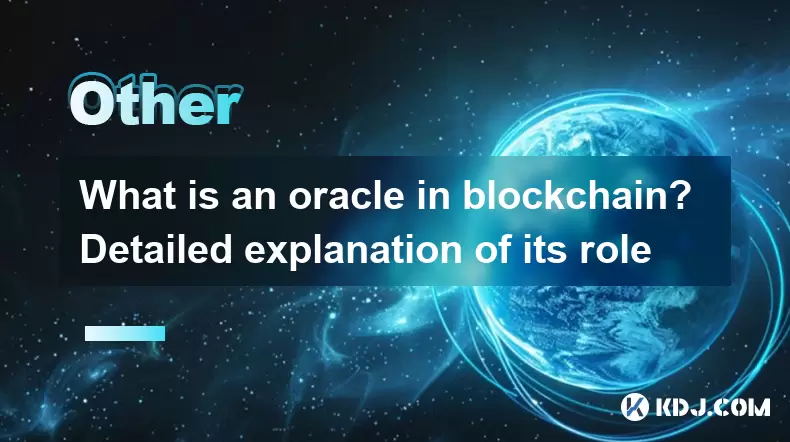
What is an oracle in blockchain? Detailed explanation of its role
Jun 21,2025 at 06:14am
Understanding the Concept of an Oracle in BlockchainIn the realm of blockchain technology, an oracle is a trusted third-party service that connects smart contracts with real-world data. Smart contracts are self-executing agreements where the terms are written directly into code and run on a blockchain network. However, these contracts operate in a close...
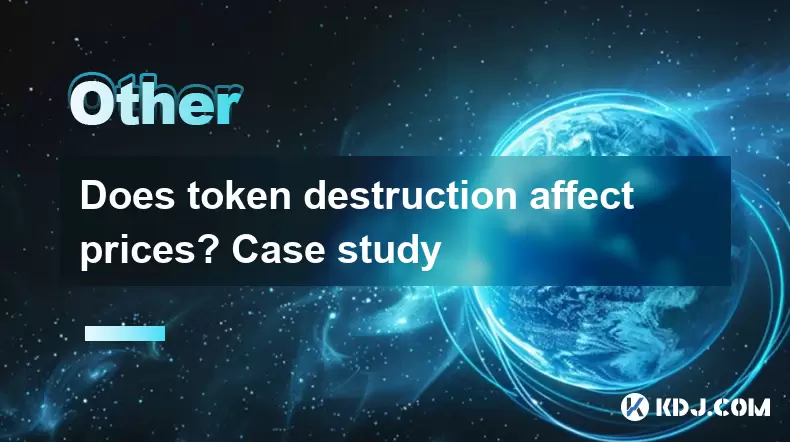
Does token destruction affect prices? Case study
Jun 22,2025 at 02:50am
Understanding Token DestructionToken destruction, commonly referred to as token burning, is a process where a portion of cryptocurrency tokens is permanently removed from circulation. This is typically done by sending the tokens to a non-recoverable wallet address, effectively reducing the total supply. Projects may implement token burns to create scarc...
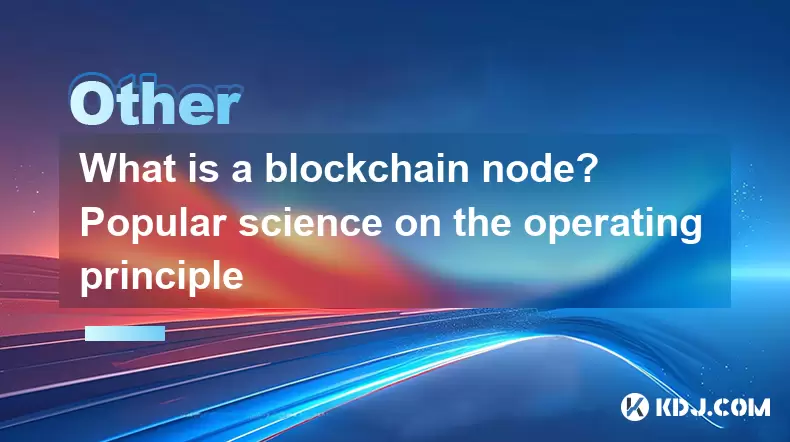
What is a blockchain node? Popular science on the operating principle
Jun 22,2025 at 11:00pm
Understanding the Basics of a Blockchain NodeA blockchain node is essentially a computer connected to a blockchain network that participates in validating and storing transaction data. Each node plays a critical role in maintaining the integrity, transparency, and decentralization of the blockchain. Unlike traditional centralized systems where a single ...
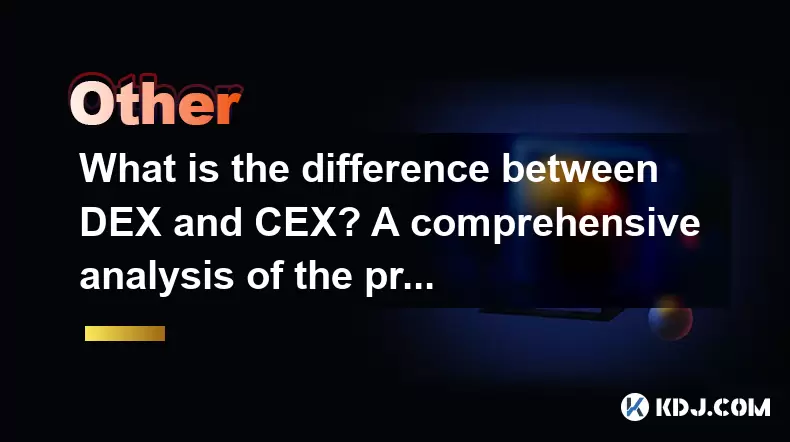
What is the difference between DEX and CEX? A comprehensive analysis of the pros and cons
Jun 24,2025 at 09:42am
What is a DEX (Decentralized Exchange)?A DEX, or Decentralized Exchange, operates without a central authority. Unlike traditional platforms, DEXs allow users to trade cryptocurrencies directly from their wallets. These exchanges rely on smart contracts to facilitate transactions, ensuring that no intermediary holds user funds. One of the most notable fe...
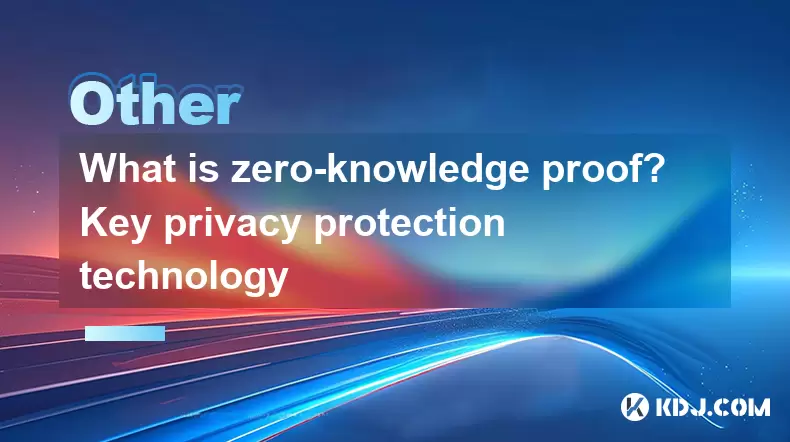
What is zero-knowledge proof? Key privacy protection technology
Jun 22,2025 at 07:29pm
Understanding Zero-Knowledge ProofZero-knowledge proof (ZKP) is a cryptographic method that allows one party to prove to another party that they know a value or information without revealing the actual content of that information. This concept is particularly important in the realm of privacy protection technologies, especially within blockchain and cry...
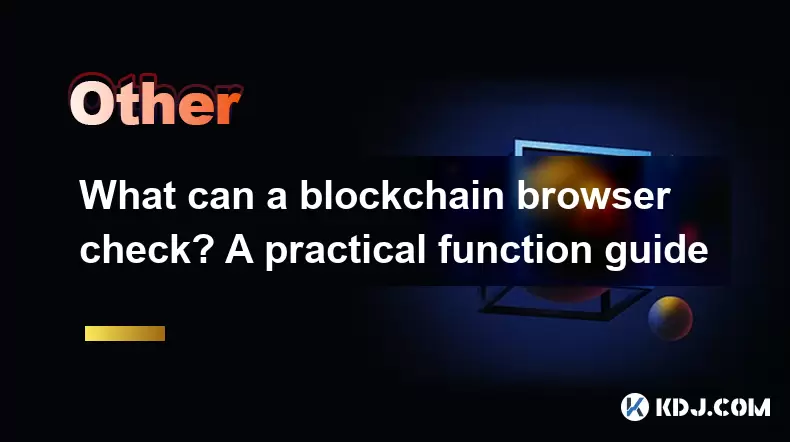
What can a blockchain browser check? A practical function guide
Jun 20,2025 at 07:35pm
Understanding the Role of a Blockchain BrowserA blockchain browser serves as a powerful tool for anyone interacting with blockchain networks. It allows users to explore, verify, and analyze data stored on the blockchain in real time. Unlike traditional ledgers or databases that are centralized, blockchains are decentralized and publicly accessible. This...

What is an oracle in blockchain? Detailed explanation of its role
Jun 21,2025 at 06:14am
Understanding the Concept of an Oracle in BlockchainIn the realm of blockchain technology, an oracle is a trusted third-party service that connects smart contracts with real-world data. Smart contracts are self-executing agreements where the terms are written directly into code and run on a blockchain network. However, these contracts operate in a close...

Does token destruction affect prices? Case study
Jun 22,2025 at 02:50am
Understanding Token DestructionToken destruction, commonly referred to as token burning, is a process where a portion of cryptocurrency tokens is permanently removed from circulation. This is typically done by sending the tokens to a non-recoverable wallet address, effectively reducing the total supply. Projects may implement token burns to create scarc...

What is a blockchain node? Popular science on the operating principle
Jun 22,2025 at 11:00pm
Understanding the Basics of a Blockchain NodeA blockchain node is essentially a computer connected to a blockchain network that participates in validating and storing transaction data. Each node plays a critical role in maintaining the integrity, transparency, and decentralization of the blockchain. Unlike traditional centralized systems where a single ...

What is the difference between DEX and CEX? A comprehensive analysis of the pros and cons
Jun 24,2025 at 09:42am
What is a DEX (Decentralized Exchange)?A DEX, or Decentralized Exchange, operates without a central authority. Unlike traditional platforms, DEXs allow users to trade cryptocurrencies directly from their wallets. These exchanges rely on smart contracts to facilitate transactions, ensuring that no intermediary holds user funds. One of the most notable fe...

What is zero-knowledge proof? Key privacy protection technology
Jun 22,2025 at 07:29pm
Understanding Zero-Knowledge ProofZero-knowledge proof (ZKP) is a cryptographic method that allows one party to prove to another party that they know a value or information without revealing the actual content of that information. This concept is particularly important in the realm of privacy protection technologies, especially within blockchain and cry...

What can a blockchain browser check? A practical function guide
Jun 20,2025 at 07:35pm
Understanding the Role of a Blockchain BrowserA blockchain browser serves as a powerful tool for anyone interacting with blockchain networks. It allows users to explore, verify, and analyze data stored on the blockchain in real time. Unlike traditional ledgers or databases that are centralized, blockchains are decentralized and publicly accessible. This...
See all articles





















